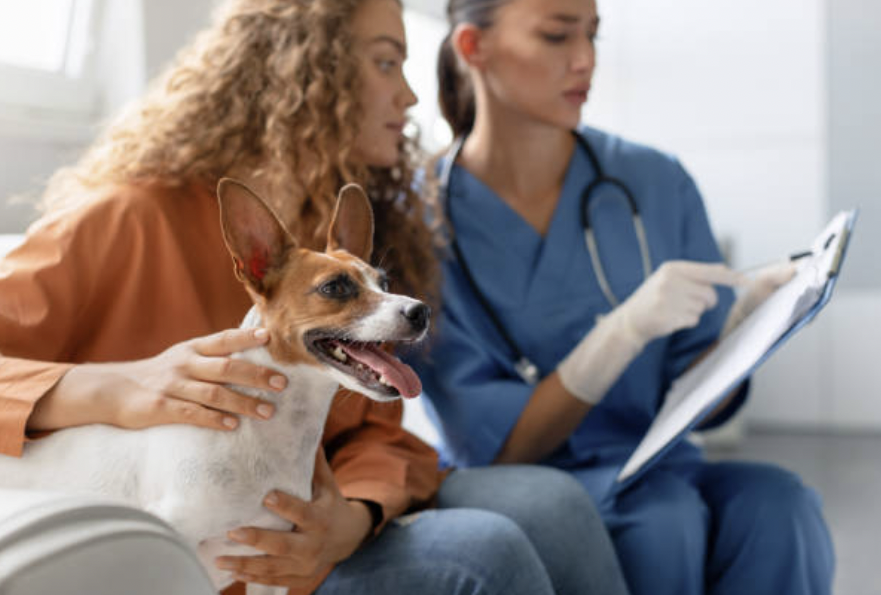When a dog walks into your clinic with signs of gastroenteritis paired with elevated liver enzymes, it’s like solving a complex puzzle where the gut and liver play crucial roles. The intricate communication between the gastrointestinal tract and the liver, known as the gut-liver axis, is a fascinating dialogue influenced by diet, genetics, and the environment. This axis involves several key components including the intestinal mucosal barrier, the gut microbiome, the portal vein, and the liver/biliary system, all of which are essential in maintaining health and identifying disease pathways.
Understanding the Gut-Liver Crosstalk
Imagine you’re seeing multiple cases of gastroenteritis in dogs, some of which also show elevated levels of alanine transaminase (ALT), a liver enzyme. While in some dogs, this enzyme elevation might resolve as the gastroenteritis subsides, in others, it persists. This persistent elevation raises questions about the underlying causes and the complex interactions within the gut-liver axis.
The Intestinal Barrier: The Body’s Gatekeeper
Within the gut, a specialized barrier exists that regulates the entry of bacteria, nutrients, and metabolites into the body. This barrier includes the intestinal mucosa and epithelium, which work together to prevent harmful substances from crossing into the bloodstream. The health of this barrier is crucial; when disrupted, it can lead to conditions like “leaky gut,” where unwanted substances leak into the body, potentially leading to inflammation and further complications.
The Role of Bile Acids and Microbiome
Bile acids are not just digestive aids; they also play a significant role in regulating the gut’s bacterial composition. They interact with receptors on intestinal cells to enhance barrier function and repair. Meanwhile, the gut microbiome, a complex community of microorganisms living in the digestive tract, is essential for maintaining gut health. An imbalance in this microbiome can lead to dysbiosis, characterized by reduced microbial diversity and altered function, which can impact the entire gut-liver axis.
Portal Vein: The Nutrient Superhighway
The portal vein is another critical component, transporting nutrient-rich blood from the gastrointestinal tract to the liver. Here, nutrients are processed, and toxins are detoxified. However, conditions like liver disease can lead to portal hypertension, disrupting the intestinal barrier and increasing the risk of translocation of harmful substances.
Nutritional Interventions and Supplements
For veterinary practitioners, understanding the gut-liver axis is crucial in managing cases involving gastroenteritis and liver enzyme elevations. Nutritional interventions can play a pivotal role. Diets should be highly digestible and tailored to support the gut-liver axis, possibly including prebiotics and probiotics to restore microbial balance.
Advanced Diagnostics and Treatments
In cases where liver enzyme elevations persist, further diagnostics such as bile acid tests, imaging, and possibly liver biopsies may be necessary. Treatments might include medications to manage inflammation or interventions like fecal microbial transplantation to restore gut microbiota balance.
The Power of Diet
The cornerstone of managing gastroenteritis involves dietary management. Highly digestible, moderate protein, and low-fat diets can help manage symptoms and support recovery. Commercial therapeutic diets and carefully balanced home-prepared diets can be effective options depending on the individual needs of the patient.
The gut-liver axis is a complex but fascinating system with significant implications for veterinary medicine. By understanding and supporting this axis through targeted diagnostics, nutritional interventions, and appropriate medical treatments, veterinarians can better manage the challenging cases of gastroenteritis with concurrent liver enzyme elevations, ultimately improving outcomes for their canine patients. Dr. Laura B. Gaylord, with her expertise in veterinary nutrition, underscores the importance of a holistic approach in treating these intricate cases, ensuring both the gut and liver are addressed comprehensively.



